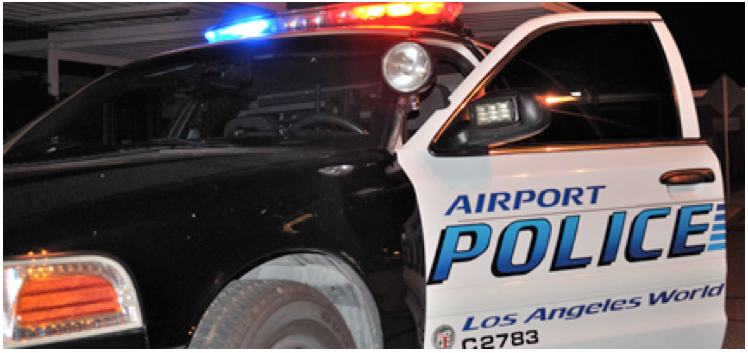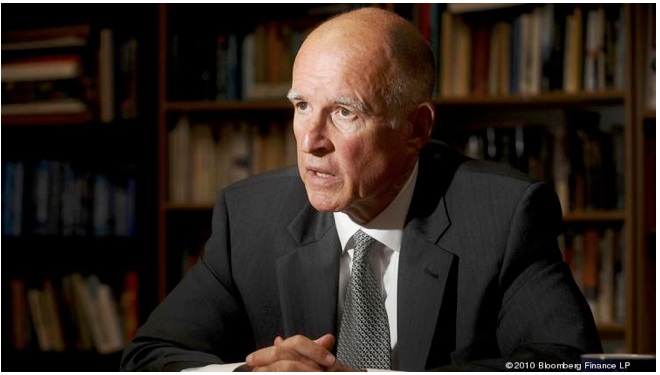NEW GEOGRAPHY--In Sacramento, and much of the media, California is enjoying a “comeback” that puts a lie to the argument that regulations and high taxes actually matter. The hero of this recovery, Gov. Jerry Brown, in Bill Maher’s assessment, “took a broken state and fixed it.”
Yet, if you look at the long-term employment trends, housing affordability, inequality and the state’s long-term fiscal health, the comeback seems far less miraculous. Silicon Valley flacks may insist that the “landscape now has been altered,” so prosperity is now permanent, but this view is both not sustainable and deeply flawed.
Jobs: The long view --Since 2010, California has begun to generate jobs at a rate somewhat faster than the nation, but this still has just barely made up for the deep recession in 2007. The celebratory notion that true-blue California is outperforming red states like Texas is valid only in a very short-term perspective. Indeed, even since 2010, the job growth in Austin and Dallas has been higher than that in the Bay Area, while Los Angeles has lagged well behind.
If you go back to 2000, the gap is even more marked. Between 2000 and 2015, Austin has increased its jobs by 50 percent, while Raleigh, Houston, San Antonio, Dallas, Nashville, Orlando, Charlotte, Phoenix and Salt Lake City – all in lower-tax, regulation-light states – have seen job growth of 24 percent or above. In contrast, since 2000, Los Angeles and San Francisco expanded jobs by barely 10 percent. San Jose, the home of Silicon Valley, has seen only a 6 percent expansion over that period.
Regional concentration --As Chapman University economist and forecaster Jim Doti recently suggested, the California boom is exceedingly concentrated in one region. “It’s not a California miracle, but really should be called a Silicon Valley miracle,” Doti noted in his latest forecast. “The rest of the state really isn’t doing well.”
The Bay Area has experienced a phenomenal recovery from the Great Recession, but San Jose has just exceeded, finally, its pre-dot-com boom jobs total. San Francisco has done a bit better, but it still took about 13 years to recover from the dot-com bust. The tech sector has provided a huge portion of the state’s job volatility, and has been on a roll. There is no reason to believe that the tech sector’s volatility has melted away. It’s based on disruptive technology.
Due to the lack of new housing construction, this boom is being undermined by ferociously high costs. Only 13 percent of San Franciscans could purchase the county’s median home at standard rates. For San Mateo, the number is 16 percent. It is no surprise that as many as one in three Bay Area residents are now contemplating an exit. There are clear signs of slowing job growth, as companies look for space in less expensive, less highly regulated areas. Even Sergei Brin, a co-founder of Google, recently suggested that startups would be better off launching somewhere else.
Mediocrity elsewhere --Even Orange County, the strongest Southern California economy, has lagged statewide levels of employment growth. Tech and information employment has dropped since 2000. The recovery, celebrated by some, is based largely on the not-so-firm basis of real estate inflation and hospitality employment.
Los Angeles County’s job growth since its prerecession high has been truly terrible. With a base of about 4.2 million jobs, it’s seen only about 93,000 net new jobs. Most sectors are down. Indeed, only two low-wage sectors, education and health services and leisure and hospitality, have shown strong job growth. Despite all the hype, tech growth in L.A. has been paltry, up 4,600 jobs since 2007 – compared to over 36,000 in Silicon Valley – while business services have actually declined.
The state’s one bright spot, business service growth, has been driven largely by the Bay Area. Southern California has generally been losing market share in this increasingly critical field. Out of 70 metropolitan areas surveyed by Pepperdine University’s Mike Shires for Forbes.com, Orange County’s growth in business services ranked 39th, San Diego 45th, Riverside 52nd and Los Angeles 60th.
Expanding inequality --Perhaps nothing so undermines the narrative of the California “comeback” more than the state’s rising inequality. A recent Pew Research Center study found California’s urban areas are prominent among the regions where the middle class is shrinking the most rapidly. California now is home to over 30 percent of United States’ welfare recipients, and almost 25 percent of Californians are living in poverty, once one factors in the cost of living, the highest rate in the country.
How can this be, in light of strong job growth? You have to look at the kind of jobs being created. Since 2007, virtually all the high-wage, blue-collar sectors – manufacturing, construction, energy and natural resources – have declined, even as the rest of the country experienced something of a resurgence in energy and manufacturing. Construction and manufacturing – high-value, high-wage sectors – have lost a combined 250,000 jobs since the recession began, while the leisure and hospitality sector – notoriously poor paying – gained over 300,000 jobs. A recent analysis by the Los Angeles Economic Development Corp. predicts this trend will continue for the foreseeable future.
Today, California can’t even create enough jobs to keep up with its college graduates. Even with the booming Northern California economy, California has created more college graduates than jobs over the past 10 years. California’s public universities granted 1,583,499 bachelor and higher degrees from 2006 to 2015, inclusive, but only 1,136,642 jobs. This is a damming statistic, in part because huge percentages of California’s job gains over the past 10 years have been for jobs that do not require a college degree. For example, 31 percent of new jobs in that time period were in leisure and hospitality, a sector which requires relatively few college graduates.
The fiscal crisis --Gov. Brown has achieved bragging rights by suggestions of a vaunted return to fiscal health. True, California’s short-term budgetary issues have been somewhat relieved, largely due to soaring capital gains from the tech and high-end real estate booms. But the state inevitably will face a soaring deficit as those booms slow down. Brown is already forecasting budget deficits as high as $4 billion by the time he leaves office in 2019. As a recent Mercatus Center study notes, California is among the states most deeply dependent on debt.
The state’s current budget surplus is entirely due to a temporary tax and booming asset markets. The top 1 percent of earners generates almost half of California’s income tax revenue, and accounts for 41 percent of the state’s general fund budget. These affluent people have incomes that are much more closely correlated to asset prices than economic activity, and asset prices are more volatile than economic activity generally. Brown’s own Department of Finance predicts that a recession of “average magnitude” would cut revenue by $55 billion.
More critically, the state continues to increase spending, particularly on pensions. Outlays have grown dramatically since the 2011-2012 fiscal year, averaging 7.8 percent growth per year through FY 2015-2016. Seeing the writing on the wall, the state’s labor leaders now want to extend the “temporary” income tax, imposed in 2012, until 2030. This might not do much to spark growth, particularly in a weaker economy.
During this recovery, California has made minimal effort to eliminate the state’s budget fragility. To use a recently popular term, this is gross negligence. It is, thus, no surprise that credit ratings agency Moody’s Investors Service ranked California second from the bottom in being able to withstand the next recession. Someday the bills will come due.
Confronting reality --Neither of us considers California to be a lost cause. But the problems are far deeper than the boosters believe – a deteriorating infrastructure (notably roads), high rates of poverty, weak high-wage growth and a looming fiscal meltdown. The current euphoria of the asset-inflation boom may make some Californians feel better, but it’s the hangover that follows which concerns us.
The hoi polloi, perhaps more prescient than their established betters, continue to leave the state. Much of this exodus comes from the young and the working class. There’s been a net migration loss of 625,000 people between 2007 and 2014. Inbound immigration from abroad has declined, notably in Southern California. Recovery may have enriched some property owners, tech magnates and connected crony capitalists, but for many the good times are ephemeral.
California retains enormous physical and human assets that decades of mismanagement have not yet managed to squander. But even the most advantaged places cannot long thrive if their policy makers feed themselves largely on delusions.
(Joel Kotkin is an R.C. Hobbs Presidential Fellow in Urban Futures at Chapman University and executive director of the Center for Opportunity Urbanism in Houston. His newest book is “The Human City: Urbanism for the Rest of Us.” Bill Watkins is an economics professor and director of the Center for Economic Research and Forecasting at California Lutheran University, which can be found at clucerf.org. This piece was posted most recently at New Geography.)
-cw









 A bottle of “Chongwater,” a flavored hemp drink marketed by comedian and marijuana icon Tommy Chong.
A bottle of “Chongwater,” a flavored hemp drink marketed by comedian and marijuana icon Tommy Chong. Rapper Snoop Dogg, the “wizard of weed wellness,” performing in Cancun in 2014.
Rapper Snoop Dogg, the “wizard of weed wellness,” performing in Cancun in 2014.










 Silver Lake Reservoir and the adjacent Ivanhoe Reservoir are now empty. (see photo left) But the community is full of questions about the future of this complex. They fear they would face the prospect of a less bucolic lake with the introduction of asphalt for parking lots and other amenities -- like restrooms, hot dog stands and food trucks – all bringing congestion, chlorine, and other unknown impacts.
Silver Lake Reservoir and the adjacent Ivanhoe Reservoir are now empty. (see photo left) But the community is full of questions about the future of this complex. They fear they would face the prospect of a less bucolic lake with the introduction of asphalt for parking lots and other amenities -- like restrooms, hot dog stands and food trucks – all bringing congestion, chlorine, and other unknown impacts. 














